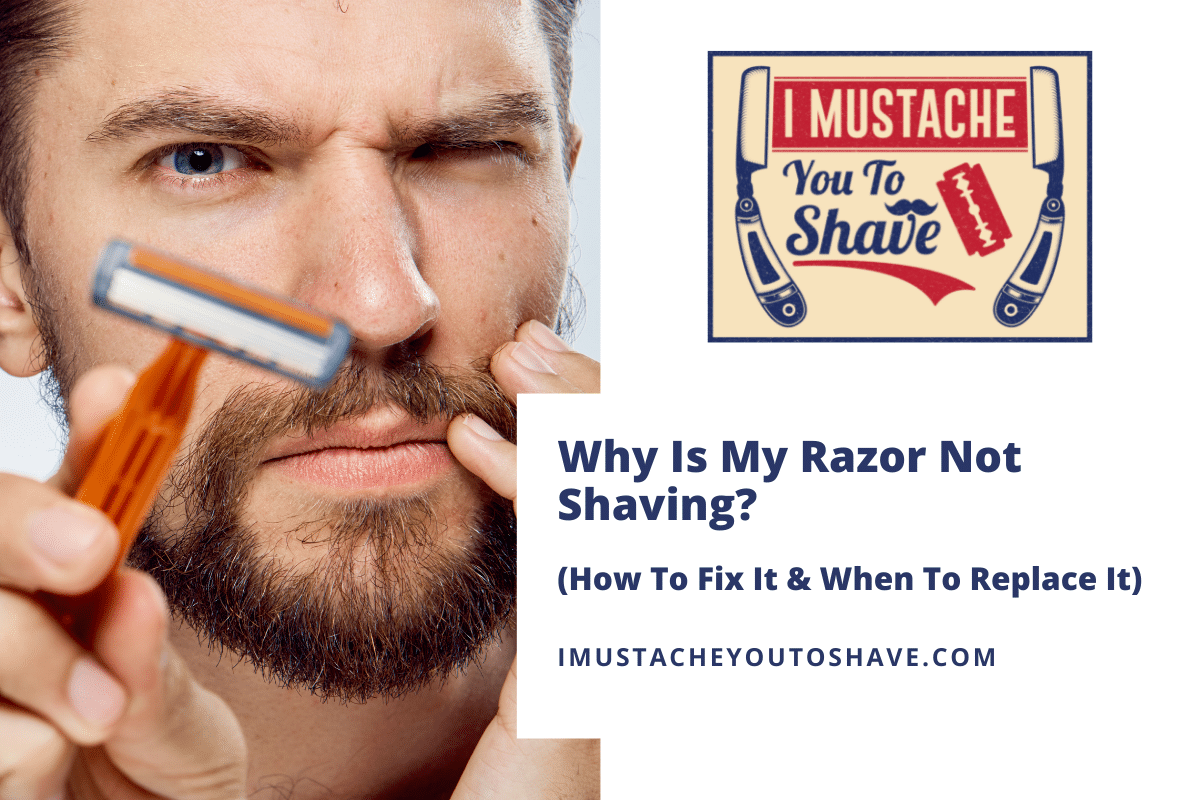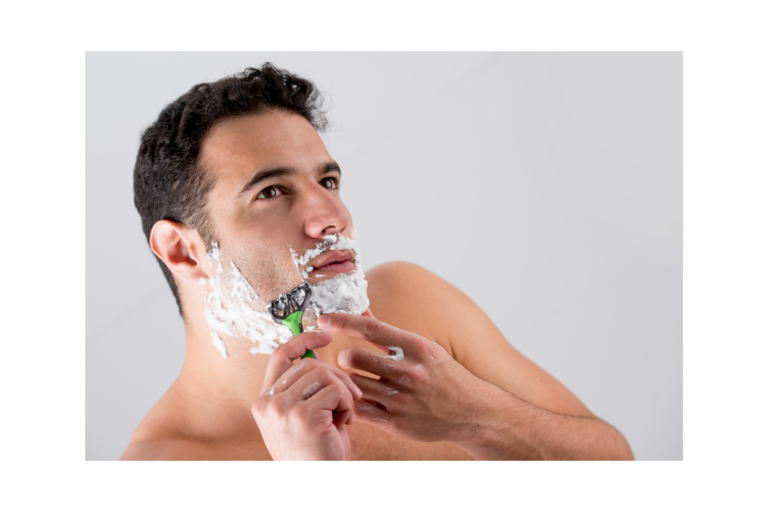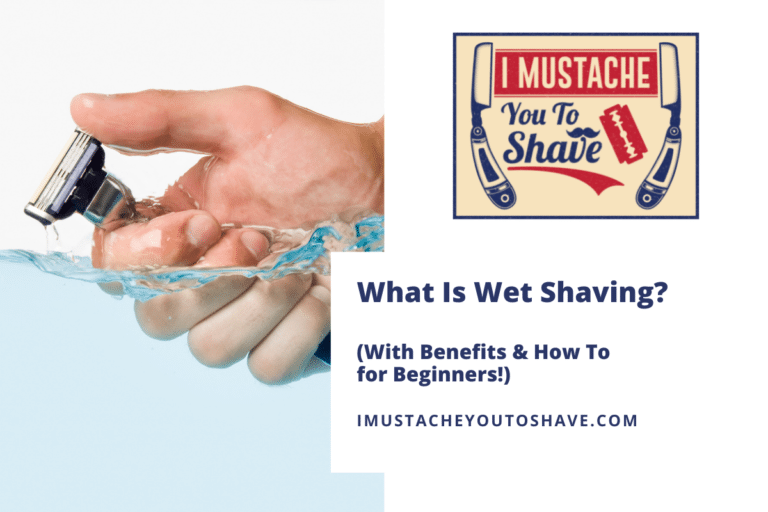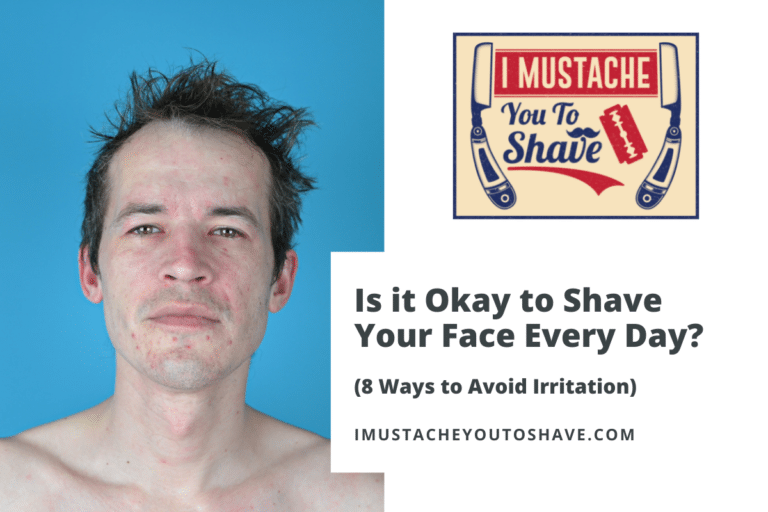Why Is My Razor Not Shaving? (How To Fix It & When To Replace It)
Having a razor that doesn’t shave can be inconvenient, annoying, and can feel like a waste of money. If you’re wondering why your razor isn’t shaving, there are a few things that you should check before giving up or tossing your razor.
If your razor is not shaving well – or at all – it may be because of one of the following reasons:
- There is no blade in the razor
- The razor isn’t correctly assembled
- The shaving angle is too shallow
- The blade is dull
- The blade is of poor quality
- The razor and blade are dirty/clogged
- The hair is too long to be cut with a razor
Keep reading to learn why your razor isn’t shaving and learn how to fix or when to replace your razor blade.
7 Reasons why your razor isn’t shaving or cutting your hair
Shaving doesn’t have to be hard, uncomfortable, or unsatisfying.
The three most common reasons why your razor isn’t shaving are a missing blade, putting your razor together incorrectly, and shaving with too shallow of an angle.
To help you have the closest and most enjoyable shave, we’ll also cover four more common reasons why your razor isn’t performing the way it should.
There is no blade in the razor
Between the brush, the shave soap, the soaking, the exfoliating, and all the other steps to getting a close shave, it’s easy to overlook something as small and simple as placing the razor blade in the razor.
Forgetting to put the blade in your safety razor is a common problem. If it’s your first time shaving with a single-edge or double-edge safety razor, it can be overwhelming.
To ensure you put the razor blade in the razor, soak your razor in hot or warm water before you shave. Soaking your razor and the razor blade in warm water means you won’t be dragging cold steel across your face. It also makes you aware of the razor blade – since, after all, you’re soaking to warm up the blade, right?
Another way to ensure you don’t forget the blade is to change your razor blade every time you shave. Since razor blades are relatively cheap – compared to expensive cartridges – don’t be afraid to change them frequently.
The razor isn’t correctly assembled
Improper razor installation is one of the most likely reasons why your razor isn’t shaving. Whether you’re using a single-edge razor or a double-edge razor, there are a few trouble spots to be aware of when you’re assembling your razor.
One of the biggest mistakes people make when putting their razors together is that they install the baseplate upside-down.
The baseplate, the metal part that secures the razor blade and has a comb or safety bar on it, has a side that exposes the blade to your skin. If you install it upside-down, the comb or guard will cover up the blade’s edge. As a result, you won’t be able to shave since the blade isn’t making contact with your skin.
To ensure that you’ve installed your baseplate correctly, ensure that you can see the razor blade’s edge poking out beyond the razor’s comb or guard. If you can’t see the edge, you’ve most likely put the baseplate in the wrong way.
The shaving angle is too shallow
The tendency for those new to safety razors is to be overly cautious with their shaving angles. As a result, the razor is moved across the face, but little-to-no hair is ever shaved. Having an appropriate shaving angle is key to making sure your razor is shaving.
Getting the right shaving angle starts with placing the cap (the top part of your razor) flat against your skin. The handle of the razor in this position is perpendicular to your skin. From there, tilt the razor roughly 30 or 45 degrees toward the direction you’ll move the razor.
If the razor’s handle gets too close to parallel with your skin, the razor’s edge isn’t exposed to the hair follicles. Instead, it’ll just drag dead skin off your face.
When working to find that 30-45 degree sweet spot, take your time to find what angle works for you and balances comfort with performance.
The blade is dull
Dull blades can hurt your shaving experience.
Shaving relies on literally razor-sharp blades that can cut hair with minimal pressure. When you don’t have sharp blades, it can irritate or simply not cut the hair.
To combat dull blades, try replacing your blade with every shave. This may seem expensive or overly cautious, but safety razor blades are incredibly cheap compared to other shaving alternatives like cartridges.
It can be fun purchasing a sample pack of razor blades like this one to find which blades you enjoy best. Finding the balance between durability and sharpness is key to finding the right razor blade that works for you.
If you want to learn more about why your razor goes dull so quickly, I’ve got you covered!
The blade is of poor quality
Related to the issue with dull blades, blade quality can greatly impact your razor’s performance.
Sometimes a batch of blades, straight out of the box, are significantly duller than other blades. Having a sample pack or a few different boxes of razor blades ensures that you always have a backup razor blade.
Some razors are more prone to going dull faster. Razors that are advertised as super-sharp or have a reputation for being sharper than others typically can’t hold that edge as well as other razors. This doesn’t necessarily mean the blade quality is poor; rather, you should consider changing that blade often or after every shave.
Besides not cutting hair, blades that come out of the box dull or damaged can pull, nick, and irritate your skin.
Some of the best and most respected brands of razor blades include Feather, Derby, and Astra.
The razor and blade are dirty or clogged
If you fail to clean the soap and hair in your razor between passes, your razor won’t shave your hair. Additionally, the soap can dry on your razor and create a crust that is difficult to remove.
Keeping the razor and blade clean during the shaving process will ensure everything works properly. If you don’t clean the hair and soap out of your razor while you shave, the razor’s edge will be blocked by debris.
One simple way to ensure the razor stays clean is to swish your razor in warm water after you make a pass on both sides of the razor — dip the razor in water after each pass if you’re using a single-edge razor.
By dipping and swirling the razor in water, the soap and hair that builds up in the safety bar or comb is freed, once again exposing the razor’s edge.
Hair is too long to cut
If your hair is too long, it can be difficult for the razor to shave effectively.
When hair is either too thick or too long, the razor’s edge can struggle to cut the hair close.
One simple solution is to use scissors to trim the hair closer to the skin. If your beard is a few inches long or longer, it might be a good idea to use some shears or scissors to do some of the heavy lifting.
Once your hair is closer to less than an inch in length, go ahead and lather up for a shave. Just make sure to check all of the other tips if you’re still struggling to get your razor to shave!







